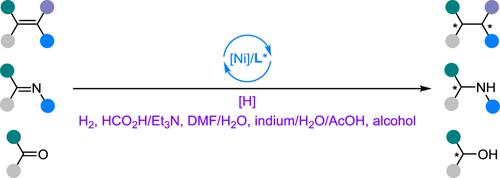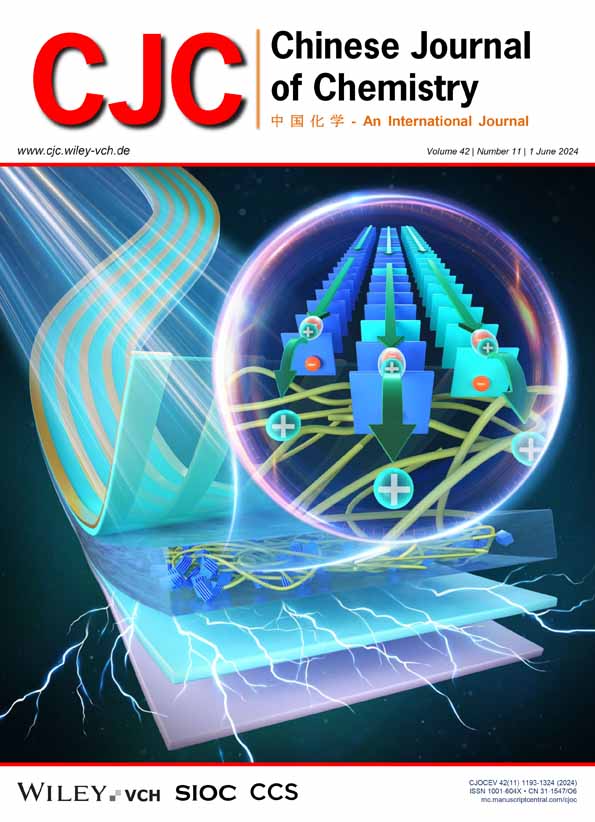Earth-Abundant Nickel-Catalyzed Asymmetric Hydrogenation†
Abstract
Comprehensive Summary
Transition metal-catalyzed asymmetric hydrogenation is an efficient and direct synthetic method to access chiral compounds, which features simplicity, easy working-up process, and high atomic economy. It typically relies on precious transition metal catalytic systems, including ruthenium, rhodium, iridium and palladium, which always face the difficulties of limited resources, high cost, and environmental contamination. Therefore, great efforts were made to apply earth-abundant, low (non-)toxic, and environmentally friendly transition metals, such as iron, cobalt, nickel and copper, to the asymmetric hydrogenation in the past decades, and some considerable breakthroughs have been obtained. In this review, we mainly summarized some recent research progress of nickel-catalyzed asymmetric hydrogenation of prochiral unsaturated molecules, including olefins, imines and ketones. And continuous development of chiral nickel catalytic systems and the application of them into challenging asymmetric hydrogenation is prospected in the future.
Key Scientists
Transition metal-catalyzed asymmetric hydrogenation has been regarded as an important and direct approach to access chiral molecules. The first example of homogeneous catalytic asymmetric hydrogenation was developed by Knowles and Horner in 1968, respectively. In 1971, Kagan developed privileged chiral DIOP ligand for asymmetric hydrogenation. Halpern and Brown made deep studies on the Rh-catalyzed asymmetric hydrogenation in 1977, respectively. Noyori developed a powerful and privileged chiral BINAP ligand in 1980. Owing to Knowles and Noyori's great contribution in the field of catalytic asymmetric hydrogenation, they were awarded the Nobel Prize in Chemistry in 2001. In 1984, Ohkubo developed pioneering earth-abundant transition metal Ni-catalyzed asymmetric hydrogenation of ethyl α-methylcrotonate. A great many scientists made tremendous contribution to the development of chiral privileged ligands, such as, Bosnich, Kumada, Giongo, Takaya, Miyashima, Achiwa, Burk, Pflaltz, Chan, X. Zhang, Imamoto, Zhou, Genet, Sannicolo, Ding, Hoge, W. Zhang, Z. Zhang, Tang, these ligands owned wide application in the catalytic asymmetric hydrogenation. In addition, Zhou, Fan made deep investigation on the asymmetric hydrogenation of challenging aromatic heterocyclic compounds. Owing to the great importance of the development of the asymmetric (transfer) hydrogenation promoted by cheap transition metal catalytic systems, some researchers, such as Hamada, Gao, J. S. Zhou, Chirik, X. Zhang, Y.-G. Zhou, W. Zhang, Lv, Dong, Fu, Deng, and Hou, made great efforts to the development of earth-abundant nickel-catalyzed asymmetric hydrogenation of prochiral unsaturated molecules, including olefins, imines and ketones. In addition, there are some other scientists that have also made great contribution to the development of catalytic asymmetric hydrogenation and Ni-catalyzed asymmetric transformation, with too limited space to list all of them.


 求助内容:
求助内容: 应助结果提醒方式:
应助结果提醒方式:


